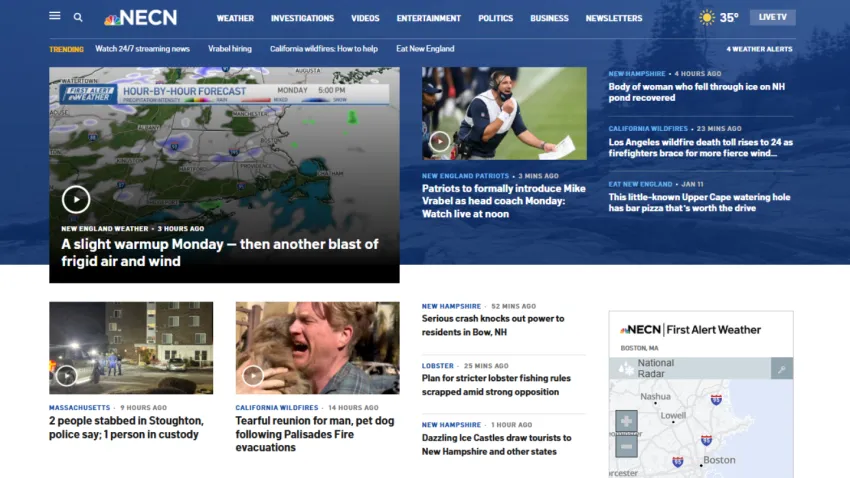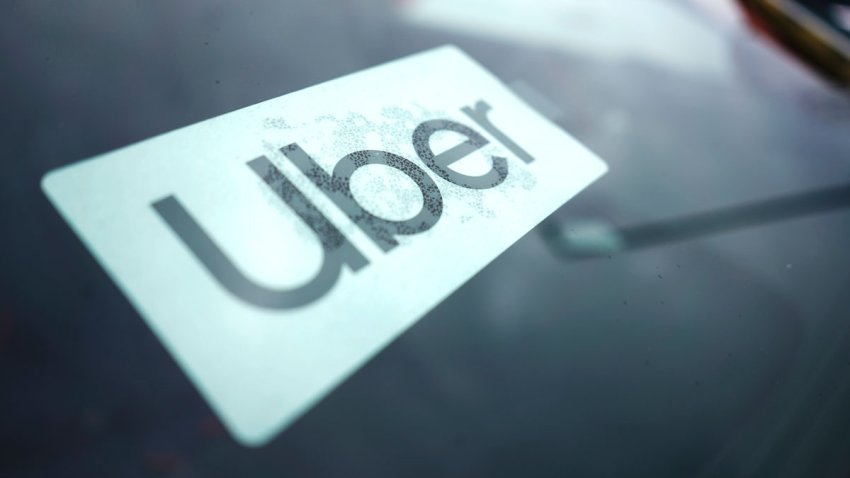

The Latest
-

Patriots UDFA tracker: Full list of undrafted rookies signed after draft
Here’s the full list of undrafted free agents signed by the Patriots following the 2025 NFL Draft.
-

53-man roster projection: Monster rookie class invades Patriots locker room
How many members of the Patriots’ 2025 draft class will make the final roster? Phil Perry forecasts a large number in his 53-man roster projection.
-

Suffolk University student attacked near Boston Common; 5 suspects sought
Boston police are searching for five suspects accused of attacking a Suffolk University student as he walked near the Boston Common late Saturday night.
-

Uber driver assaulted by passenger; suspect charged with kidnapping, intent to rape
An Uber driver was assaulted by a passenger in Seekonk, Massachusetts, early Saturday morning, and the suspect now faces seven charges, including kidnapping and intent to rape. Seekonk police said they responded to a report of a motor vehicle crash in the area of County Street and Arrowhead Road around 1:35 a.m. Saturday. When officers arrived, the... -

Ageless Al Horford adds to his legend with Game 4 block party vs. Magic
Another playoff game, another Al Horford defensive masterclass. Chris Forsberg breaks down the Celtics veteran’s latest turn-back-the-clock moment.
-

Patriots' 2025 draft class draws strong grades from experts
Here’s a roundup of expert NFL Draft grades for the Patriots’ 2025 class.
-

US Supreme Court will not review Karen Read's appeal to have 2 charges dismissed
The US Supreme Court has denied a request to review Karen Read’s appeal to have two of the three charges against her dropped
-

Magic coach's complaint about officiating validates Celtics' approach
Magic head coach Jamahl Mosley wasn’t happy about the officiating in Game 4, but his comments only prove that the Celtics played a smart game.
-

Watch live: Karen Read trial focuses on ‘Hos long to die in cold' search
Week two of testimony in the Karen Read murder trial is underway, with a half day of witness testimony followed by questioning of ARCCA crash experts.
-

Harvard vs. Trump lawsuit goes before a federal judge Monday
The frozen funds feud between Harvard University and the White House will go before a federal judge on Monday.
-

Why Eastern Bank is merging with HarborOne
Why Eastern Bank is merging with HarborOne
-

Week begins with beautiful weather, temps in the 70s
This week begins with absolutely beautiful weather! Monday looks warm and sunny, with highs climbing into the low to mid 70s, well above the normal high of 61 degrees for early May.
-

Jurors return to courtroom for second week of Karen Read retrial
Week two of the Karen Read murder trial begins Monday morning.









